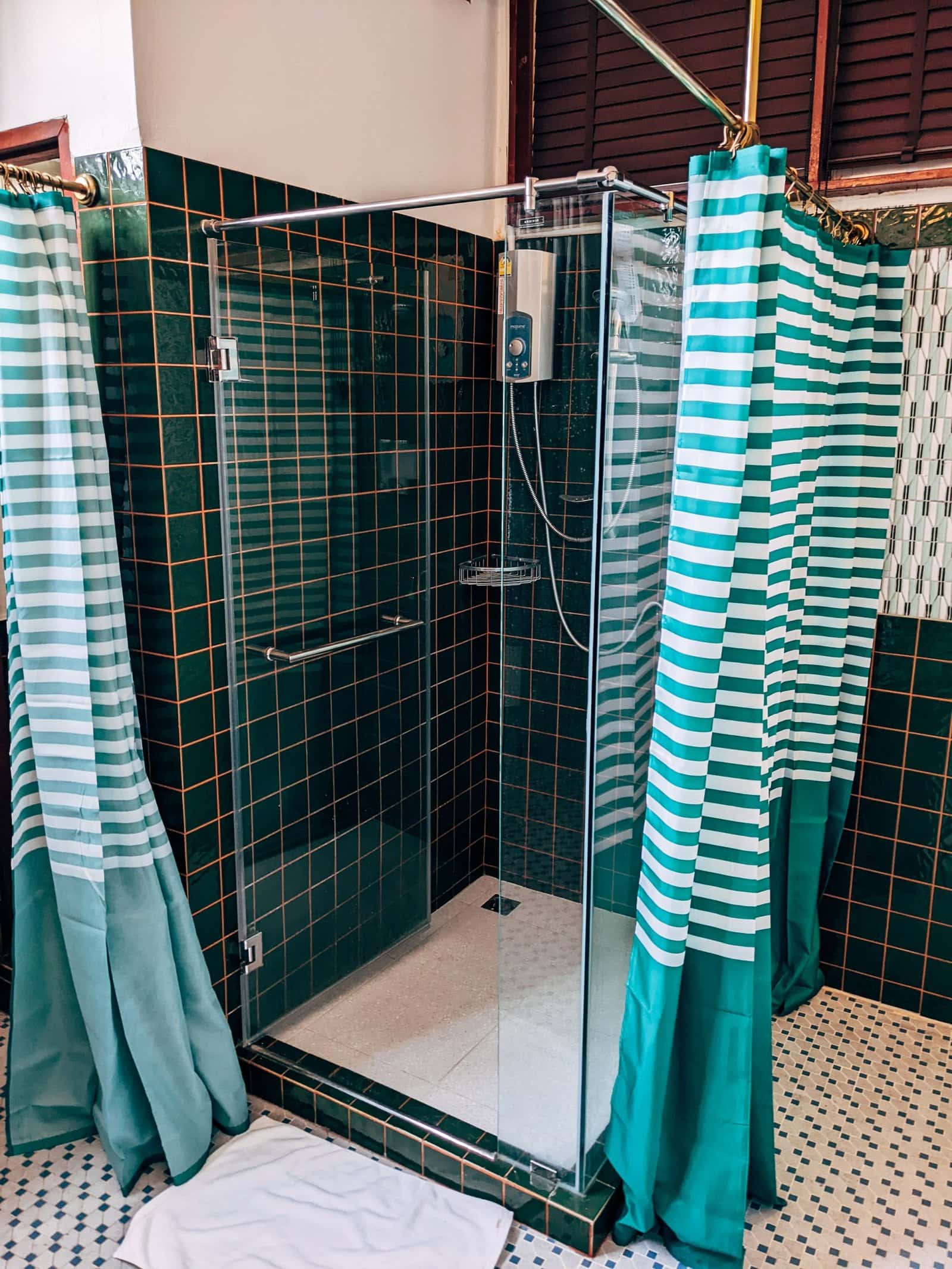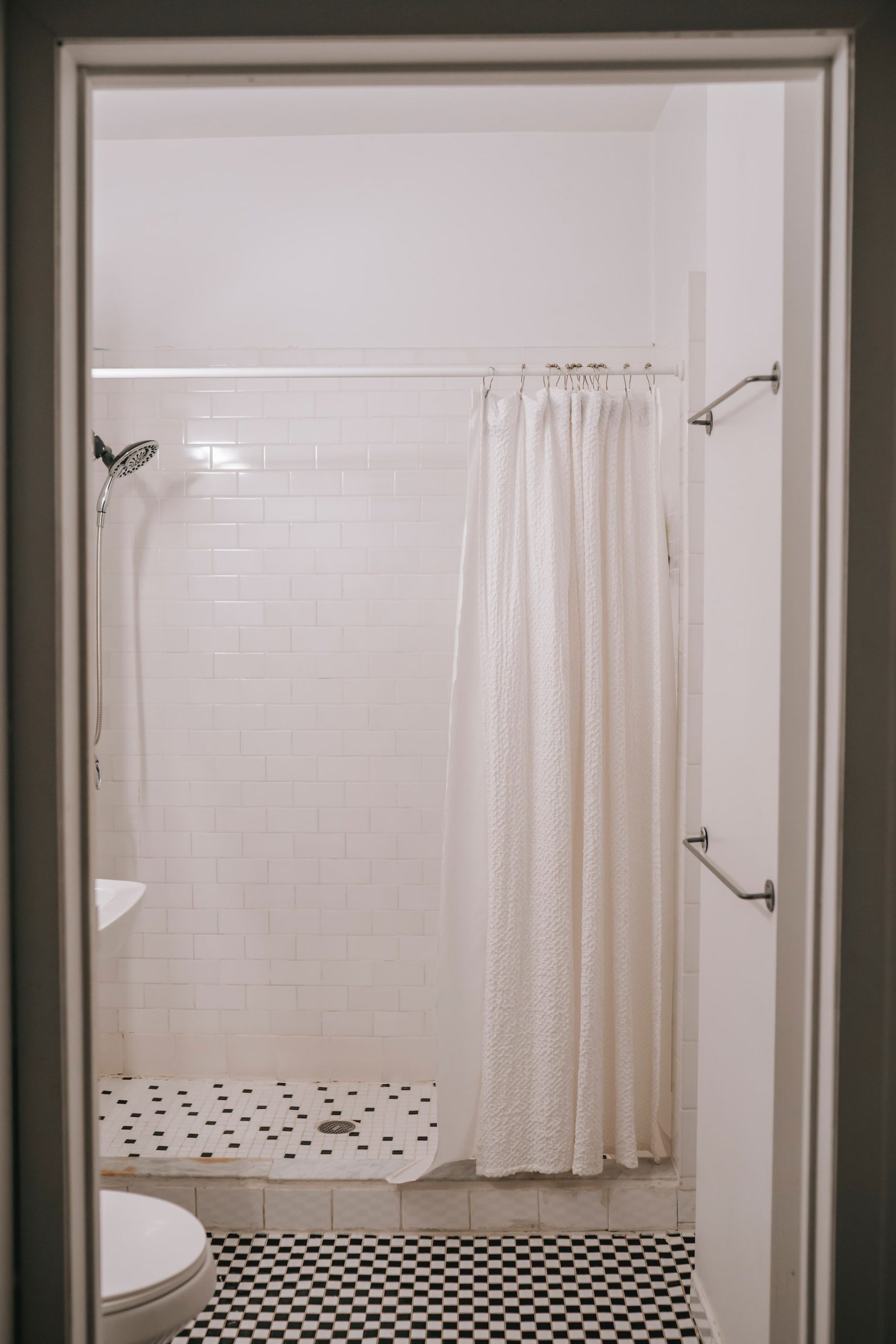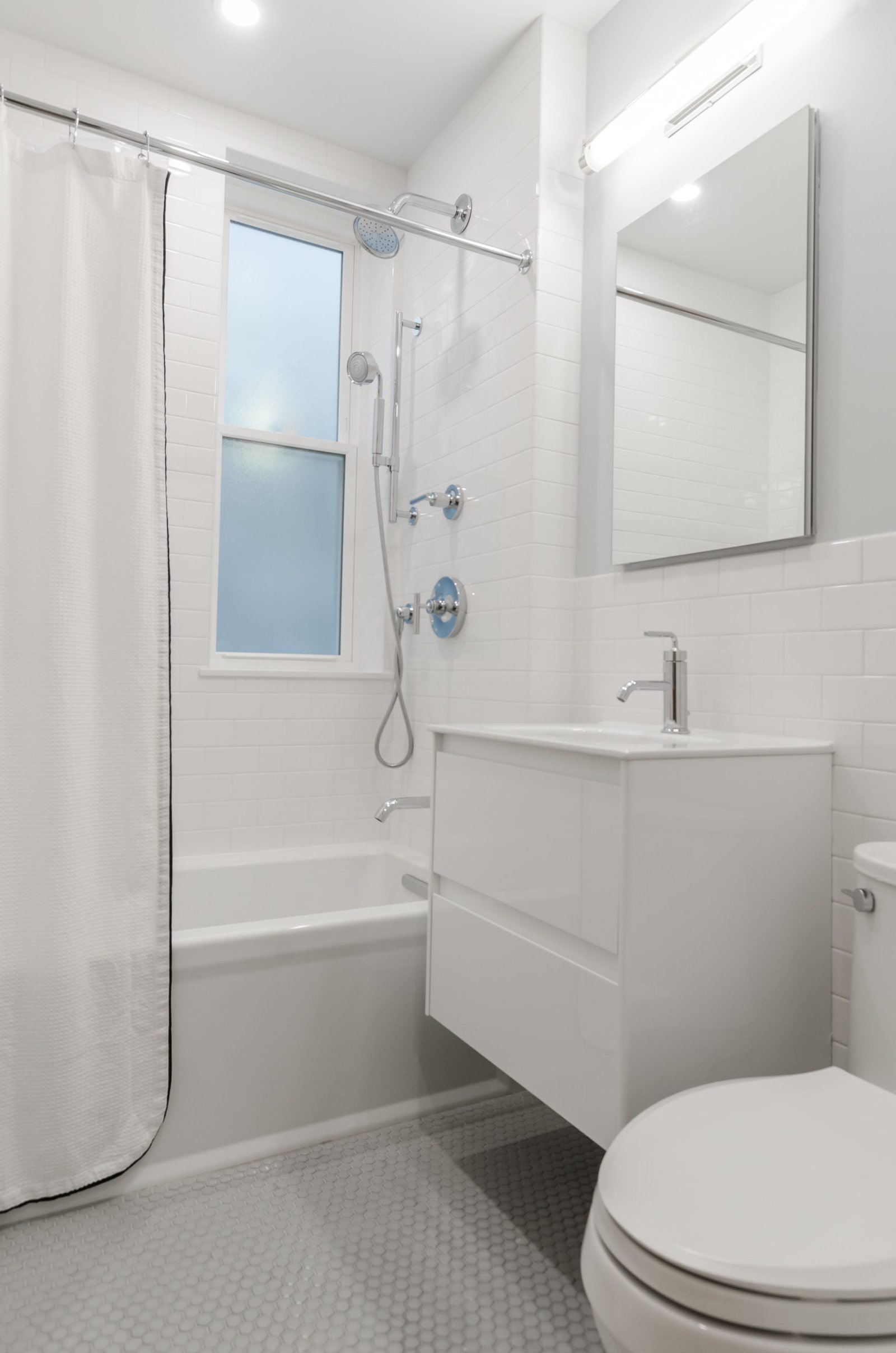Should Shower Curtains Touch The Floor?
We rarely look at the shower curtains in our bathroom, but you’ll have to agree that they’re a necessary and useful accessory. They not only provide privacy, but they also serve as a splash barrier, keeping a portion of the bathroom dry, and, to some extent, contribute to the bathroom’s aesthetic value.
During installation, many people argue about whether or not the curtains should touch the bathroom floor. Should they hang just above the floor, exposing a portion of the shower area, or should they be ceiling-to-floor, which looks more aesthetic?
The standard size for shower curtains is at least 72 inches and they should hang at least 2 inches above the bathroom floor. But first, let’s hear both sides of the argument so you can make an informed decision.
Aesthetic Appearance

Some homeowners prefer shower curtains that hang all the way to the bathroom floor. One of the primary reasons for doing so is to improve bathroom aesthetics. This may also be a good idea if you want to conceal the underside of a dirty tub or an unattractive shower pan.
Aside from slightly increasing the aesthetic value of the bathroom, a floor-to-ceiling shower curtain has a few other advantages.
Safety Issues
This is one of the most serious issues with a shower curtain that touches the bathroom floor. The bathroom is a wet and slippery space where caution is required. There is an increased risk of a trip and fall accident with a floor-touch curtain.
The last thing you want to do when getting in or out of the shower or bathtub is get your foot caught in the shower curtain and fall. Such incidents are quite common and can result in serious bathroom injuries or even prove to be fatal.
Homeowners should avoid this option in particular if they have an elderly person in their home with mobility issues or children, as they often lack balance.
Hygiene Concerns

It is a well-known fact that germs thrive in moist environments. A shower curtain that touches the bathroom floor increases the likelihood of contracting such germs. Floor-touch curtains may be splattered with leftover bathroom water, leaving the curtain’s hem dirty and in desperate need of thorough cleaning almost every day.
Unfortunately, this is not something that can be done regularly, prompting the need for an alternative solution.
Mold & Mildew
Shower curtains are notorious for attracting mold and mildew. Their permanent presence in the bathroom, combined with creases and folds, makes them a breeding ground for mold. This possibility is heightened when the shower curtains come into contact with the floor and remain damp for an extended period.
This is why, to avoid excessive and gross mildew build-up, it may be a good idea to suspend the shower curtain a few inches above the floor.
Unkempt Look
Contrary to popular belief, a floor-to-ceiling curtain may actually detract from the aesthetic appeal of your bathroom, especially if it is already messy and untidy. Unless you have a spotless bathroom with a well-scrubbed tub underside or shower pan, an extra-long shower curtain may give your bathroom an unkempt appearance.
Some Other Shower Curtain Points to Note

Aside from the debate over floor-touching, shower curtains are one of the dirtiest objects in your bathroom, likely harboring more germs than your toilet seat. To maintain good hygiene, spray them with vinegar and wash them with a clean cloth every now and then, or simply throw them in the washer every two weeks.
Also, make sure to straighten out your curtains after each shower to let them dry evenly and thereby avoid the accumulation of mold and mildew.
If you choose the standard length of 72 inches for your shower curtain, make sure to install the shower rod at least 75 to 77 inches from the floor to allow for enough space between the floor and the curtains.
Finally, the material you choose for your shower curtain will affect its durability and propensity for germ retention. While plastic curtains are the most cost-effective option, they get easily dirty and may only last a short time. Opt for longer-lasting options instead by choosing nylon or poly-cotton blends.
Final Thoughts
The decision to let your shower curtains touch the floor, like any other decor decision, is a personal one based solely on your priorities. Some may argue that shower curtains will always get dirty, so it doesn’t matter if they touch the floor.
You may, however, need to weigh the other risks associated with such a decision, particularly the risk of tripping on a needlessly long curtain and injuring yourself or your loved ones. Whatever you decide, make sure you consider all of these factors before you hang that curtain!








